UPDATE: U.S. Forest Service plans to remove as many as 600 Heber Wild Horses in 2024.
0 Comments
November 30, 2018 the Heber Wild Horse Territory Collaborative Working Group final recommendation was made public. The Heber Wild Horse Territory Draft Management Plan states that the collaborative working group’s recommendations were taken into consideration by their integrated team of resource specialists from the Forest Service, Arizona Game and Fish Department, and the Arizona Department of Agriculture in drafting the management plan. Associate professor in Arizona State University’s School of Sustainability, Michael Schoon headed the Collaborative Working Group. He is also the person who fired the Heber Wild Horses Freedom Preservation Alliance representative, Mary Hauser, from the working group stating she had “not been working in the spirit of the group”. About three years later a Courthouse News Service article revealed that Schoon himself did not agree with the management plan and would not promote it. Forest Service plans to cull Arizona wild horse herd Brad Poole / October 30, 2021 Excerpt: The management plan came after a two-year collaborative working group of stakeholders including horse advocates, scientists, multiple federal agencies and ranchers. Michael Schoon, an associate professor in Arizona State University’s School of Sustainability, headed that effort. Schoon and the rest of the working group, which ended work about two years ago, declined to help promote the management plan, which he said isn’t adaptive enough and focuses too narrowly on the wild horse territory. That legally protected area is a small part of the herd’s natural range, Schoon said. “We understood the reality of the Forest Service, that they couldn’t just expand that territory,” he said. https://www.courthousenews.com/forest-service-plans-to.../ The fact is the area the Forest Service designated as the Heber Wild Horse Territory is too restrictive and not only does it not allow for the horses to roam throughout their natural range in search of forage, water, and shelter but it was not based on any official wild horse survey according to FOIA responses we received from the Forest Service. The Forest Service continues to use the 19,700 acres as the foundation for their “appropriate management level of 50 to 104 horses based on the resources available within the territory”. The initial culls will be with the intent to reduce the herd population to the low of 50 horses which is a non viable number. Heber stallions Brave Warrior and Clyde. These stallions are among the majority of the herd that do not live within the area designated by the Forest Service as the Heber Wild Horse Territory. If the management plan is implemented they will be among those that are culled. October 13, 2018 Two Heber wild horse bachelor stallions were found fatally shot on FS Rd 50 around mile marker 8. We were told the Navajo County Sheriff's Dept conducted an investigation on October 13, 2018 and turned their information over to Forest Service law enforcement. Robin Crawford went to the district office obtain the contact information for the Sitgreaves law enforcement officer, John Lopez in order to find out what the current status was on the shootings. Forest Service office staff told Robin that they do not have the phone number for Lopez and they have no way to contact him. (We can only speculate as to whether the Sitgreaves Forest Service is so mismanaged that these important numbers are not available to the staff or whether there was a deliberate lack of cooperation.) Through other means a phone number was obtained for John Lopez. Officer Lopez spoke with Robin and told told her he was unable to give her any information because it is an ongoing investigation and they are working the case. When she asked Mr. Lopez if he could tell her the procedure used to investigate, again he said he was unable to do that because it is an active investigation. She asked if bullets were retrieved from the bodies. He said no information will be given unless an arrest is made. Previously when Robin had asked Black Mesa District Ranger Richard Madril how investigations of this sort are done he replied, “We investigate theses incidents as a crime. Scene is investigated, locations of perpetrators, lines of trajectories, or causal factors, and collect any evidence possible. If anything brings identification then it would escalate from there.” We were told Mr. Lopez had investigated the scene on 10/13/2018. On 10/14/2018, a Navajo County Sheriff’s deputy had been there and left just ahead of our team. When our team arrived they took many photos of the bodies. There were no signs the bodies had been scavenged by animals. The bodies showed no indication an investigation had taken place. There were no signs any bullets had been removed. A metal detector was used which indicated the bullets were still inside the bodies. October 18, 2018 The bodies of the two wild stallions were discovered to have been buried. We do not know if necropsies were conducted or bullets were retrieved. Fired from the Collaborative Working Group The Heber Wild Horse Freedom Preservation Alliance Working Group participant, Mary Hauser, was fired by phone message in Sept. 2018. The termination of Mary left the Working Group with NO Heber wild horse advocate who had any in depth knowledge of the Heber Herd and the forest in which they live. The Heber Wild Horse Territory Collaborative Working Group Terminated Me Via Voicemail. My Public Response by Mary Hauser The reason I am writing a public response following my termination by the Heber Wild Horse Territory Collaboration Working Group is not to defend myself in the public’s eye. It is because I have seen the inside workings of this group and I am terrified as to what is being planned for the Heber Wild Horse Herd and I think the public has a right to know. In Mike Schoon's voicemail he said, "In our opinion you have not been working in the spirit of the Collaboration." He never said what that "spirit" was, so I'm left to draw my own opinion. My opinion is because I would not conform to what I believe to have been their preset agenda for their ultimate management plan which will decimate the herd and send more than 3/4 of the Heber herd to a fate unknown. As excited as I was to join the Collaborative Group and represent the Heber Wild Horses and their Territory, I am just as disappointed to see how it was orchestrated and carried out over the last twelve months. Arizona State University along with Southwest Decision Resources was contracted and paid to administrate the working group. The initial problem I had was for a meeting of this magnitude where in attendance we had the Forest Service, BLM, and Arizona Game and Fish officials as well as, cattle grazing permittees, and other interested parties involved and yet no official minutes were ever taken at any of these meetings. I repeatedly asked for minutes to be taken during the first three meetings so that meetings could be reviewed. This would have been a nice paper trail for someone who would have wanted to know who made comments and who is in favor and who is not. There are very important decisions being made during these meetings and people should be held accountable for their decisions. I was told they were not taking minutes because they were not necessary. ASU answers...Someone would take Notes. Originally I felt my contributions to the group would be to support and protect the herd with my long term observations and studies of the herd, individual workings of the bands, and my knowledge of the forest. However, I realized I was being forced out of my role as a contributor and into the role of a quiet observer of a well orchestrated screenplay of a management plan for the Heber Wild Horse Territory. I believe this was plan which appeared to have already been devised and laid out prior to the first meeting of the Collaborative Group. The reason this became so obvious is that members of the Collaborative Group openly admitted to me at the onset of these meetings that they did not have much, if any knowledge of the Sitgreaves National Forest. Many, including some of the Forest Service personnel, had never even been out into the forest until a field trip with this group. The next startling obvious change occurred when people who had never owned a horse or had very limited to no experience with the Heber Wild Horses were suddenly full of knowledge. Those same people now were full of suggestions about the logistics of gathering, monitoring, tagging, placing tracking collars, and darting birth control. They also took active roles in decisions on how many horses would be left on the land without education or concern of genetics or viable herd numbers. Their sudden knowledge gave me the impression that they had been hired as actors (without pay) and apparently given scripts to drive the direction of these meetings that were already planned out. The meetings moved swiftly to follow the path of the Bureau of Land Management (BLM) recommendations and the activities that BLM currently engages across our nation. It also became obvious within the first three meetings that there was no education of the day to day life of the Heber wild horses. When I attempted to educate, defend or make a point in support of the Heber Wild Horses it was ignored. Sometimes I would receive a follow-up phone call from one of the ASU members, Michael Schoon, to ‘correct’ me and advise me on what I could, should or should not say during the meetings. Meanwhile it appeared others had freedom of speech. Early on the BLM took the lead of this Collaborative Group even though these horses are not on BLM land. The BLM agent controlled the direction of how things were going to be carried out. The Forest Service employees to this point made very few comments even though they are charged with the management of these horses. Per the Wild and Free-Roaming Horses and Burros Act of 1971 the Forest Service has the responsibility to designate Wild Horse Territories and implement management plans for those Territories. Through the years the Forest Service had failed to devise a plan to manage the Heber Wild Horse Territory, so it’s not surprising that they have passed their responsibility off to the BLM which has had years of experience stripping the American West of wild horses. We have to make it clear that there is nobody left on the working group panel who is truly an advocate for the horses. We know it by their own words...one of the so called advocates suggested "euthanasia" as a way to cull the herd. We know it by their actions...the Forest Service illegally contracted with ranchers in the 1980s and 1990s to capture and remove free-roaming horses without ever having a management plan. Then again in 2005 they announced they were going to remove free-roaming horses until a court injunction prevented them from doing so. We know it by their inaction...a working group member turned her back on the wild horses for approximately three weeks in an area she was assigned by Forest Service to deliver water to during the drought. Over the course of the meetings their lack of professionalism was displayed as shown here in their final voicemail termination. This came as no surprise because they knew I would NEVER accept their plan to manage the Heber Wild Horse Herd into extinction. To the Forest Service: This is notice to insure that my name is NOT to appear on any documentation connected with the Heber Wild Horse Territory Management Plan. Extreme fire danger forced forest closure As the days moved on more people both near and far became aware of the drought situation and helped in different ways such as donating or loaning water tanks to be placed in the forest, donating water from their wells to fill the tanks, offering money for gas for the water haulers, etc. All was greatly appreciated more than words can express. On May 23, 2018 due to extreme fire danger the Forest Service closed areas of the Sitgreaves including the areas where the wild horses are most abundant. Entry gates were closed and locked and closure signs were posted. The HWHFPA coordinated with the Forest Service and water haulers were issued permits so that they could continue to enter the forest in order to provide water for the wild horses and other wildlife in the areas where the animals were cut off from water sources due to cattle pasture fencing. Our permitted water hauling team was Robin, Irene, Jackie, Mike, Bob, and Stacy. The permits were very specific as to who could enter the forest, where they could go, and when they could go in. Although the Forest Service did not actually participate in the water delivery effort they listened to our needs and responded accordingly though not always as quickly as they should have. We learned that no water had been provided on FS Rd 50 by the party the Forest Service told us would be coordinating to do so. So we fought with FS in order for our haulers to be allowed to include hauling water into that area. After a few days our haulers were finally issued a temporary permit for the other party’s area. Weeks had gone by with no water being hauled into that area of crisis. The other party not only didn’t provide the water they said they would, they didn’t even bother to tell anybody, including the Forest Service, which left the horses and other wildlife to suffer for their negligence. That party did come back days later and began hauling water to their area of assignment. As the summer temperatures grew hotter the tanks were running dry before the day was over. One trip into the forest a day was not enough. After explaining the situation to the Forest Service our haulers were permitted a second daily run. Finally the monsoon rains came. The forest was reopened on July 16. Water haulers were asked to remove their temporary tanks. We are forever grateful to all the people who helped by donating their time and resources because we could not have done it alone. Water hauling has been occurring off and on as needed since the summer of 2018. Just a few photos from the water hauling effort of 2018... May 2018 the drought The effects of Arizona’s multi year drought were hitting the forest hard in some areas. Things grew particularly dire for the horses that were prevented from migrating to other areas of the forest due to the extensive criss-crossing of public lands pasture fencing. Seeing how desperate the situation was becoming, Heber herd advocates took it upon themselves to use whatever resources they had on hand to haul water to various tubs they could collect that they placed in the forest. There was no time to wait for authorization by the Forest Service to do so. This was the first year of water hauling for the horses so a lot had to be figured out on the fly. As the days and weeks went by a lot was learned. The 2018 water hauling project became a model for the following years. In areas where little water was available the condition of horses was quickly deteriorating. Could the serial shootings of Heber wild horses have begun in 2017? Although we typically consider the Oct 2018 shootings of two Heber wild horse bachelors as the beginning of the serial shooting sprees, there were two other wild horses shot a year and a half prior to that. May 3, 2017 we were notified of a dead horse on the side of FS Rd 51. The Forest Service was called but they did not have an available law enforcement officer at the time and so advised us to call the Navajo County Sheriff’s Dept. The following morning one of our advocates met with a Sheriff’s deputy in the forest at the body of the horse. It was a yearling chestnut filly with an obvious bullet hole in her. The deputy opened a case on the death. On May 5th we got notification of another horse that had been fatally shot. Judging by the amount of scavenger activity and decomposition the second horse was most likely shot a couple of days after the first horse. He was approximately two years old and also a chestnut. The Sheriff’s Dept was notified and did an investigation. No arrests were ever made in those shooting deaths. At the time those shootings occurred we made Facebook posts asking for any information or tips to be called in to the Sheriff’s Dept. We also gave the contact number of one of our advocates which resulted in her getting a death threat. She notified the Sheriff’s Dept. They did an investigation and were able to trace the call back to a member of a prominent local family. It was his word against our advocate's word so the case was dropped with our advocate being advised by the investigating deputy to be careful. Needless to say, we removed her phone number from our post! Sheriff's deputy investigating the shooting death of the filly. Nobody from our group approached the SDR or ASU and asked to be chosen for the working group. We all received an unsolicited email invitation to be part of the interview process. This screenshot will hopefully set to rest any rumors that were contrived by an individual in a failed attempt to embarrass one of our group members. Brave Warrior wet from a summer rain. Although the Heber herd has survived in the forest for hundreds of years without a man-made management plan their very future is now in the hands of a government agency that has a record of trying to exterminate them. Collaborative Working Group interview process In 2007 the Forest Service agreed with the Federal Court stipulation to involve the public and comply with NEPA in their development of the Heber Wild Horse Territory management plan. As a means to gather public input they opted for a collaborative approach which would include a ‘working group’. Arizona State University's School of Sustainability along with Southwest Decision Resources (SDR) conducted 28 interviews in order to gain public opinion and recommendations for the management plan as well as to select their working group panel. In March of 2017 the interview process for the working group began with emails being sent out to various people including three from the Heber Wild Horses Freedom Preservation Alliance. There were ten basic questions that were asked during the interviews. In July 2017 an interview synthesis prepared by SDR was released. A working group panel was chosen. Mary Hauser was selected to be our group’s representative. However, the majority of individuals and agencies participating were anti wild horses. The working group meetings, which were closed to the public, began in Aug 2017. The Forest Service was under no obligation to follow the final recommendations of the collaborative board and working group. It was a beautiful summer day at the Bison Ranch gazebo. Mary Hauser giving a brief history of the Heber wild horse herd. Robin Crawford reading off questions posed by the public with answers from the Forest Service. 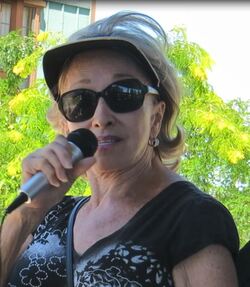 Bari Mears, President and Founder of Phoenix Animal Care Coalition 911 (PACC911) talking about her friend Patricia Haight (Wild Horse Annie of the Heber Herd) who had passed away just a few years before. Bari spoke of Patricia's passion and research for the Hebers that she loved so much. Rancher family woman at the mic with her stack of binders containing her family history and whatnot.  Robin replied to the rancher woman's talk by saying it's not about a person's family history, "it's about our public lands and our input into it".  Young prize winner going up to select his prize.  Although the topic was serious and at times a little contentious there was also laughter.   Some of the prizes were kept in the saddlebags waiting for drawing winners to make their selection. 2016 information event at Bison Ranch In 2016 the Heber Wild Horses Freedom Preservation Alliance held an information event at the Bison Ranch gazebo in Overgaard. Originally scheduled for June 18 it was postponed to July 16 due to the Cedar fire burning south of Show Low. The fire ultimately consumed over 45,900 acres. Local residents and people from the Phoenix area came to learn about the horses and to speak of their own experiences and hopes for the Heber wild horse herd. Drawings were held for prizes and Heber Wild Horses tee-shirts were given out to kids. Members of our group gave a brief history of the herd and spoke of the importance of keeping the horses wild and free-roaming in the Sitgreaves National Forest. A number of people from the audience also took the microphone. Among the speakers was Bari Mears, President and Founder of Phoenix Animal Care Coalition 911 (PACC911). Another was a teacher who wanted to get her students involved in the history and preservation of the horses. A mom spoke about wanting to preserve the legacy of the wild horses for her own children and to teach them to observe and respect wildlife. Her family named some of the Heber wild horses and those names are still used to this day such as “Legend” and “Wanagi”. A photographer talked about visiting the forest to photograph the horses. There were others who spoke for keeping the Heber herd wild and free-roaming. In opposition to keeping the herd in the forest was a local woman from a public lands ranching family. She took the typical side of the ranchers with her talking points. She compared the horses to feral dogs and cats and said the horses needed to be managed like other animals and did not want them treated as the wild horses they are. She had no evidence but claimed the horses came from the Indian Reservation. Although she came armed with stacks of papers, notebooks, and handouts she was unable to answer simple questions pertaining to cattle grazing in the forest that were posed by someone in the audience. We had invited the Forest Service to come and speak. They declined but sent the following statement which was read to the audience by one of our members. “We at the Apache-Sitgreaves appreciate the great work done to resolve the horse-related concerns and appeal points on the Apache-Sitgreaves Forest Plan and that we look forward to a continued working relationship for development of a Management Plan for the Heber Wild Horse Territory. The Forest is actively working on developing a collaborative process that invites discussion from different perspectives. We also want to create an effective way for people to provide input into the planning process and stay informed throughout the process. While we were not able to join you in person today, we are very excited to move forward with the planning process for the Territory and are looking forward to meeting and working with you.” Steve Best, Forest Supervisor |
Archives
February 2023
Categories |

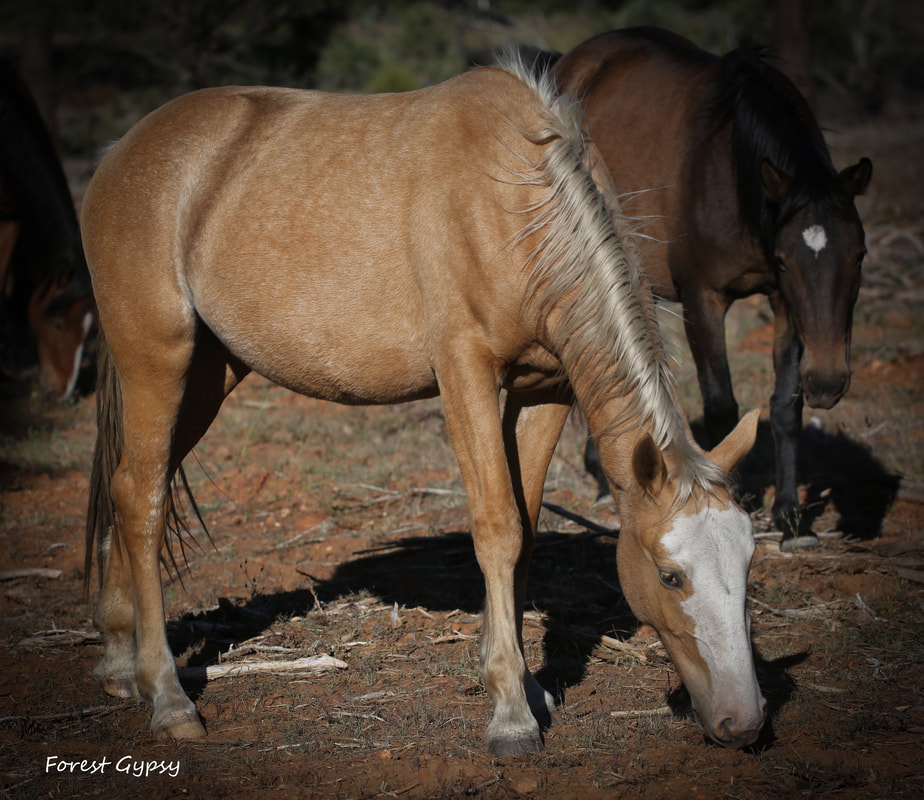












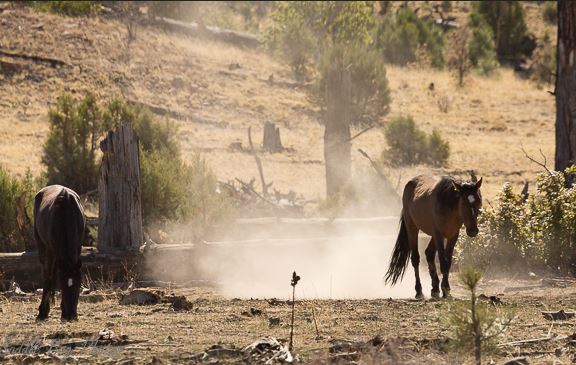
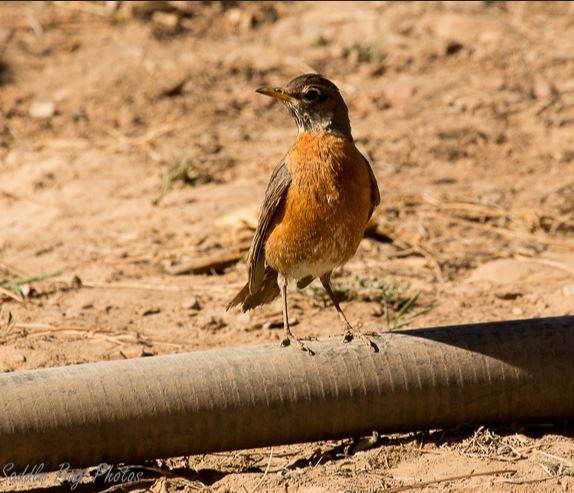

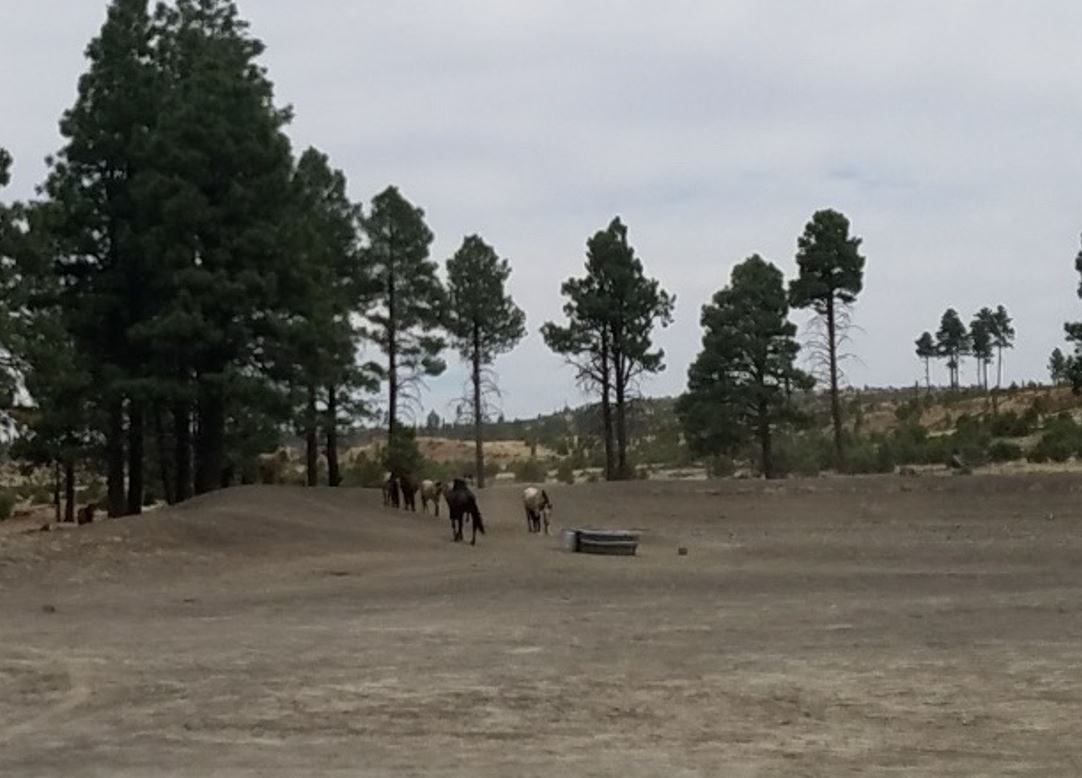














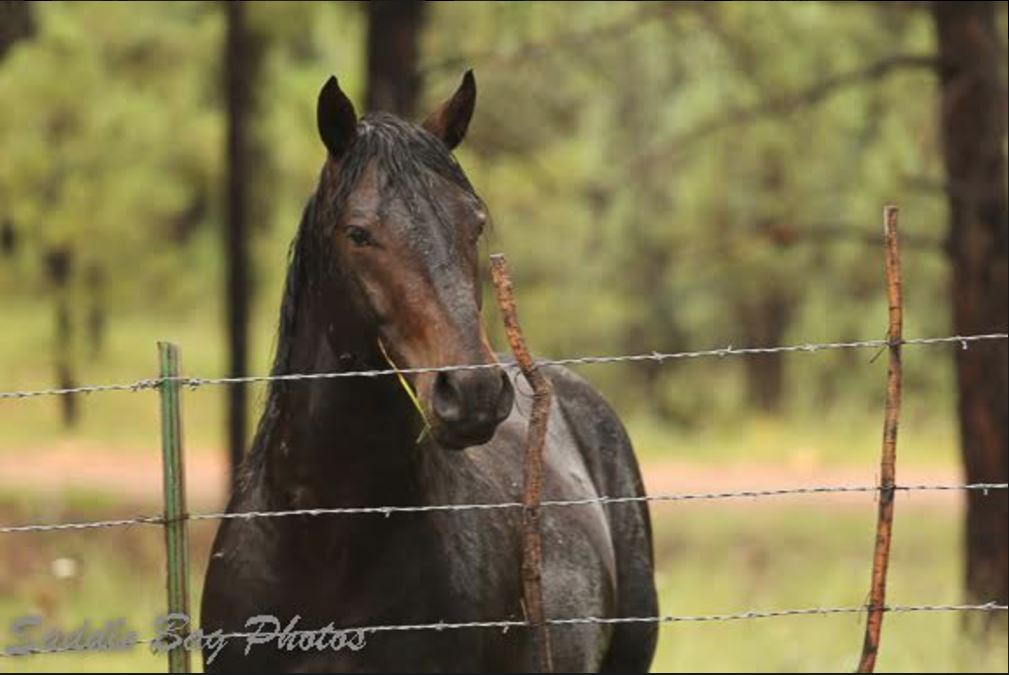





 RSS Feed
RSS Feed
